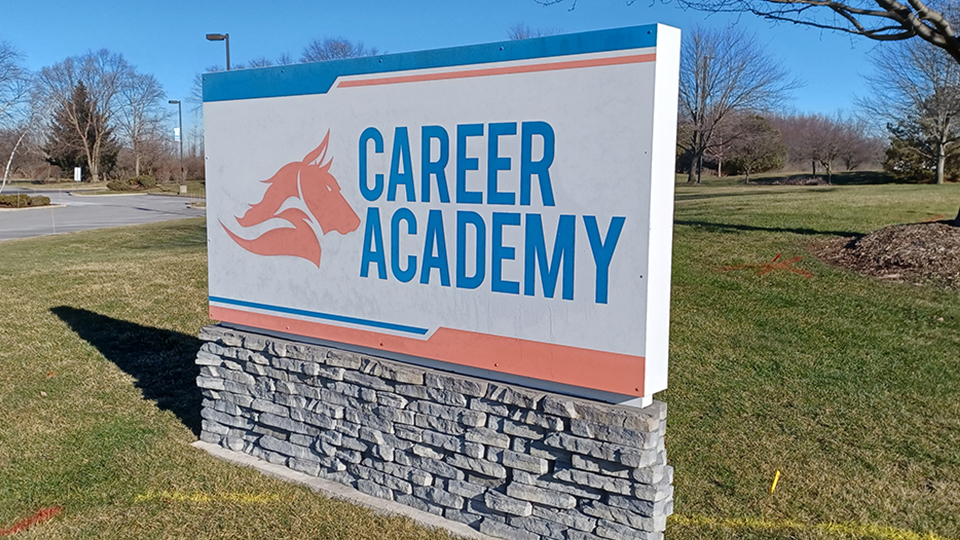Indiana taxpayers will send millions more to charter schools in new state budget
Subscriber Benefit
As a subscriber you can listen to articles at work, in the car, or while you work out. Subscribe Now
Indiana lawmakers gave charter schools major funding boosts in the next state budget after advocates ramped up lobbying efforts in the 2023 legislative session to extend more benefits to the traditional public counterparts.
New appropriations for charter schools are part of a nearly $1.5 billion increase in tuition support for schools of all types. Much of that was shadowed, though, as Republican legislators touted new dollars to fund a nearly universal expansion of the state’s Choice Scholarship voucher program — which allows families to receive vouchers to attend private schools.
Charter schools, specifically, are set to see about the same tuition support increase as traditional public schools.
But the new biennial budget for fiscal years 2024 and 2025 makes three significant changes to charter finances.
- It increases the bonus Charter and Innovation Network School Grants they can get to $1,400 per student — up from its current level of $1,250.
- It includes $25 million in new capital grants for brick-and-mortar charter schools to access for facilities costs.
- It funnels a portion of property tax operations funding growth to charter schools in Marion, Lake, Vanderburgh and St. Joseph counties.
In addition, lawmakers drew the greatest pushback from Hoosier school officials and traditional public education supporters with a provision in Senate Bill 391 that would force school districts in those four counties to also share referendum funding with charters.
Slice of referendum revenue goes to charter schools
Gov. Eric Holcomb has until Monday to sign or veto the Senate bill or the measure will automatically become law.
The bill requires school districts in the four counties to provide a proportional share of referenda adopted after June 30 with area brick-and-mortar charters. In other counties, sharing those funds would remain optional, at least for now.
Debate on the bill late Thursday night noted that Allen County was left out of the sharing.
Republican lawmakers who supported the bill maintained during public testimony that those counties were chosen because, collectively, that is where a “majority” of the state’s charter school students are located.
Indiana charter schools with enrolled students who live within the boundary of school districts that get voter approval for an operation or safety referendum would receive a per-student share of the local property taxes collected.
School districts that are distressed units are exempt, per the legislation. Currently, that means the Gary Community School Corporation would not be subject to referenda sharing.
Indiana’s nonpartisan Legislative Services Agency estimates that school districts in the four counties received $210.1 million in school operating or safety referenda revenue in 2022. If Senate Bill 391 had been law, those districts would have been required to distribute about $23.9 million to charter schools.
About 29,000 and 29,700 non-virtual charter students are expected to be enrolled in Indiana in fiscal years 2024 and 2025, respectively.
Separately, Senate Bill 391 extends Indiana charter schools’ authorization up to 15 years. Current law allows charters to be approved by the state for up to seven years.
GOP proponents pointed to new “accountability” and “transparency” requirements that are also laid out in the bill.
For example, charter schools that take part in a district’s referendum would be required to support the campaign and promotion to get it to pass. And charters would also have to hold a public hearing on its annual budget before it is adopted and submitted to the state.
The bill further provides that school corporations that share referenda with eligible charter schools are not subject to Indiana’s existing “$1 Law,” which requires public school districts to sell or lease vacant or unused instructional buildings for a single dollar to public charter schools.
Increased per-student funding
Under Indiana’s current school finance system, state tax dollars are used to provide comparable per-pupil funding to district and charter schools.
Traditional public school districts can also levy local property taxes to pay off debt and for their operations funds. But charter schools can’t, putting them at a disadvantage for paying for certain expenses, like transportation or facilities costs.
Under the new budget requiring operations sharing, school corporations are estimated to lose $9.3 million to charter schools in 2025, and another $12.5 million in 2026, according to a legislative fiscal analysis. Over time, as levies increase, the amount school corporations transfer to charter schools will increase more.
The state also gives charter schools an extra $1,250 per pupil to compensate for their lack of property taxes.
Bumping that amount up to $1,400 per student is expected to increase charter school revenue by an estimated $4.5 million — up to $6.0 million — in both the 2024 and 2025 fiscal years.
Still, charter school critics have long argued that such schools are not obligated to serve every student in a given community — unlike those in traditional public school districts. That’s because capacity limits student enrollment.
The public charters also have private boards and are therefore not accountable to voters, opponents say.
“School choice” supporters maintain that parents deserve the right to more flexibility and customization in their children’s education. Doing so requires increased access to private schools, but also public charters.
The Indiana Capital Chronicle is an independent, not-for-profit news organization that covers state government, policy and elections.
